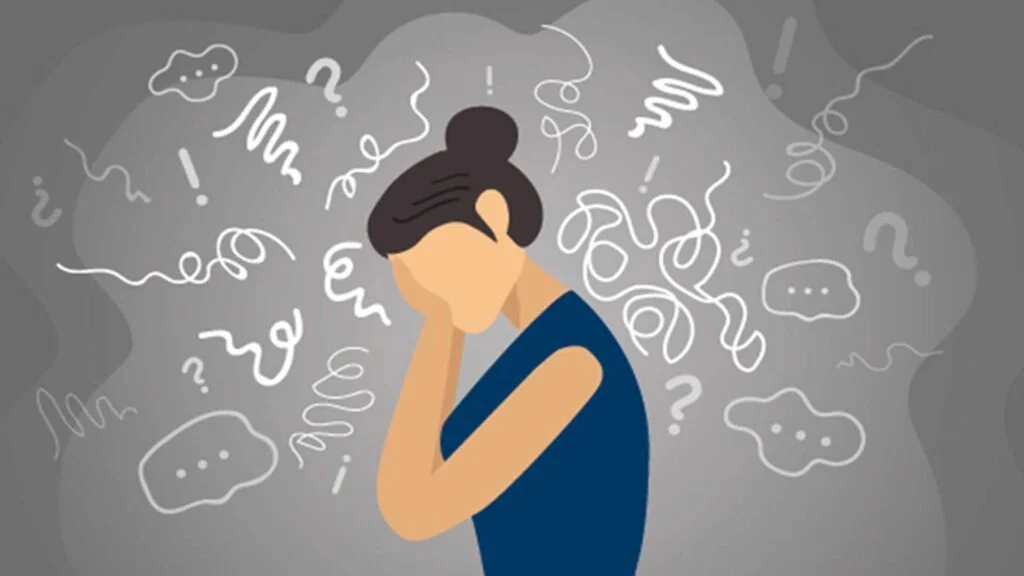Contents
Introduction

Mind-Body Therapies: Techniques, Applications, and Effectiveness
Mind-body therapies encompass a wide range of practices aimed at enhancing the connection between the mind and body to promote healing, reduce stress, and improve overall well-being. These therapies focus on the interplay between thoughts, emotions, and physical health, emphasizing that mental states can directly influence bodily functions. Common mind-body approaches include mindfulness meditation, yoga, tai chi, biofeedback, and guided imagery. These techniques are used to manage chronic pain, anxiety, depression, stress, and other health conditions, often as complementary treatments to conventional medicine.
This article explore into mind-body therapies, detailing key techniques, their applications in various therapeutic contexts, and their overall effectiveness. It also addresses common misconceptions and criticisms, highlighting how these therapies can influence emotional, psychological, and physical well-being.
What are Mind-Body Therapies?
Mind-body therapies focus on the interaction between mental and physical processes, aiming to promote holistic healing. Rooted in ancient practices, these therapies are designed to harness the mind’s power to affect the body, particularly in reducing stress and improving health outcomes. During a typical session, individuals engage in activities that enhance self-awareness and relaxation, such as meditation, breathing exercises, or mindful movement. These therapies work by reducing physiological stress responses, increasing emotional regulation, and fostering a greater sense of well-being.
Mind-body therapies work by engaging the mind to positively influence bodily processes, particularly through stress reduction and enhanced self-awareness. Stress is a significant contributor to many health conditions, and mind-body therapies focus on calming the nervous system, reducing the fight-or-flight response, and promoting relaxation. Techniques such as meditation, mindful movement, and biofeedback encourage the body’s natural healing mechanisms, improving emotional regulation, physical health, and overall well-being. These therapies are particularly effective in managing chronic conditions where stress exacerbates symptoms, such as chronic pain or anxiety disorders
Why are Mind-Body Therapies Important?
Mind-body therapies offer a holistic approach to health that addresses both psychological and physical aspects of well-being. By integrating techniques like mindfulness, relaxation, and movement, these therapies can help individuals manage a wide range of conditions, such as chronic pain, anxiety, and depression. Additionally, they can be beneficial for overall stress reduction and improving quality of life, especially when used alongside conventional medical treatments. Mind-body therapies provide accessible, non-invasive tools that promote long-term health by encouraging individuals to engage in their own healing process.
Real-Life Example: An individual experiencing high levels of stress decides to incorporate mindfulness meditation into their daily routine. This practice involves focusing on the present moment and observing thoughts and feelings without judgment. Over time, they notice a substantial reduction in their anxiety levels and an improvement in their ability to concentrate. The consistent practice of mindfulness helps them manage stress more effectively, leading to enhanced emotional stability and overall mental health.
Core Concepts
- Mind-Body Connection: The core idea of mind-body therapies is that mental states can significantly impact physical health. By fostering positive mental habits like relaxation and mindfulness, individuals can effectively manage stress and improve overall health. This approach highlights the reciprocal influence between mental and physical well-being, emphasizing the importance of psychological practices in achieving optimal health.
- Stress Reduction: Many mind-body therapies target the reduction of physiological stress responses, which are linked to conditions such as heart disease, anxiety, and chronic pain. Techniques like relaxation and deep breathing activate the parasympathetic nervous system, lowering stress levels and promoting relaxation. These therapies help individuals manage stress more effectively, leading to improved health outcomes and enhanced quality of life.
- Self-Regulation: Mind-body therapies empower individuals to take control of their health by learning to regulate their thoughts, emotions, and bodily functions. This self-regulation process fosters improved mental clarity, emotional balance, and overall well-being. By equipping individuals with tools to manage stress and emotional challenges, these therapies support greater personal control and resilience.
- Holistic Healing: These therapies emphasize treating the whole person rather than just alleviating symptoms. By addressing both mental and physical aspects of health, they promote long-term wellness and resilience. This holistic approach integrates various therapeutic practices to support comprehensive healing and balance, ultimately contributing to a more enduring state of health and well-being.
Techniques Used in Mind-Body Therapies
- Mindfulness Meditation: Enhances awareness of thoughts and feelings without judgment. Reduces anxiety by promoting relaxation and present-moment focus. Helps manage anxious thoughts and improves emotional regulation. Encourages a greater sense of control over anxiety and fosters a calmer mental state.
- Yoga: Uses physical movement and breath control to stimulate endorphin production and enhance mood. Regular practice increases self-awareness and balances emotional state. Helps alleviate symptoms of depression and boosts overall well-being. Promotes a deeper connection between mind and body for improved mental health.
- Tai Chi: Involves slow, deliberate movements and deep breathing to promote relaxation. Helps manage PTSD symptoms by improving emotional control and stress levels. Enhances coping strategies for trauma-related triggers. Provides a gentle, meditative approach to reducing stress and improving emotional stability.
- Progressive Muscle Relaxation: Combines with CBT to manage physical anxiety symptoms. Reduces muscle tension and promotes relaxation before social interactions. Improves confidence and reduces anxiety in social situations. Helps individuals develop greater control over physical anxiety responses.
Notable Figures in Mind-Body Therapies
Jon Kabat-Zinn: Developed the Mindfulness-Based Stress Reduction (MBSR) program, integrating mindfulness meditation into medical settings to help patients manage chronic pain and stress. His approach has significantly influenced the incorporation of mindfulness in clinical practice.
Herbert Benson: A pioneer in mind-body medicine, Benson’s research on the relaxation response demonstrated how meditation can reduce stress and promote physical health. His work laid the foundation for understanding the physiological effects of meditation.
Dean Ornish: A prominent advocate of mind-body medicine, Ornish’s work focuses on how lifestyle changes, including meditation and yoga, can reverse heart disease and promote wellness. His comprehensive programs emphasize the integration of diet, exercise, and emotional well-being.
Thich Nhat Hanh: A Vietnamese Zen Buddhist monk, Hanh popularized mindfulness practices in the West and emphasized the connection between mental clarity and physical health. His teachings have inspired global movements toward mindfulness and compassionate living.
Herbert Benson- Photograph by Margaret Kois

Theories Influenced by Mind-Body Therapies
- Yoga Therapy: Incorporating physical postures, breath work, and meditation, yoga therapy integrates mind-body principles to enhance physical and mental health. It influences various therapeutic approaches by emphasizing holistic healing.
- Cognitive Behavioral Therapy (CBT): Mind-body therapies like mindfulness and biofeedback influence CBT by incorporating techniques that enhance self-awareness and stress management. These approaches help individuals challenge and reframe negative thought patterns more effectively.
- Mindfulness-Based Stress Reduction (MBSR): Developed from mindfulness practices, MBSR integrates meditation and body awareness to reduce stress and improve mental health. It combines traditional mindfulness techniques with structured therapeutic interventions
- Person-Centered Therapy: This therapy focuses on creating a supportive therapeutic environment. Mind-body approaches influence its practice by integrating techniques that enhance client self-awareness and emotional expression..
- Acceptance and Commitment Therapy (ACT): ACT incorporates mindfulness and acceptance strategies to help individuals embrace their thoughts and feelings rather than avoiding them. This approach enhances psychological flexibility and improves overall well-being.
Applications of Mind-Body Therapies in Treating Mental Health Disorders

Anxiety Disorders
Mindfulness meditation is a popular mind-body therapy used to manage anxiety disorders by promoting relaxation and enhancing present-moment awareness. This practice helps individuals become more aware of their thoughts and feelings without judgment, reducing overall anxiety levels.
Example: An individual with Generalized Anxiety Disorder (GAD) might engage in daily mindfulness meditation sessions. By focusing on their breath and observing anxious thoughts as they arise, they can learn to reduce their anxiety symptoms and improve emotional regulation.
Image Source: soulmitr.org
Yoga is often used to treat depression by improving mood and increasing self-awareness through physical movement and breath control. Regular practice helps stimulate the production of endorphins, which can enhance mood and provide a sense of balance.
Example: A person experiencing major depressive disorder might participate in a weekly yoga class that incorporates gentle stretching and mindful breathing. This practice helps elevate their mood, reduce symptoms of depression, and increase their sense of well-being and self-awareness.
Image Source: magazine.columbia.edu/

Depression

Post-Traumatic Stress Disorder
Tai Chi, a mind-body practice involving slow, deliberate movements and deep breathing, is used to help manage PTSD symptoms. It promotes relaxation and helps individuals develop better control over their physical and emotional responses to trauma.
Example: A person with PTSD might participate in Tai Chi classes to help manage their symptoms. Through the practice of mindful movement and breathing exercises, they can reduce stress levels, enhance emotional regulation, and develop coping strategies to handle trauma-related triggers.
Image Source: onlymyhealth.com
Certifications Programs Mind-Bodyy Therapies
- American Board of Integrative Medicine (ABIM) Certification: ABIM offers certification for practitioners specializing in integrative medicine, which often includes mind-body therapies. The program focuses on combining traditional and complementary approaches to improve overall health. ABIM certification ensures that practitioners are trained to integrate mind-body techniques, such as mindfulness and biofeedback, into patient care, emphasizing a holistic approach to wellness and patient-centered care.
- International Association for Yoga Therapy (IAYT) Certification: IAYT provides certification for yoga therapists, focusing on the therapeutic application of yoga for physical and mental health. The program emphasizes evidence-based practices, including mindfulness, stress management, and physical rehabilitation. IAYT certification ensures that therapists are skilled in using yoga techniques to support emotional and physical healing, integrating mind-body principles into therapeutic practice.
- National Certification Board for Therapeutic Massage and Bodywork:: NCBTMB offers certification for practitioners specializing in therapeutic massage and bodywork, which includes various mind-body techniques. The certification focuses on ethical practice, advanced bodywork techniques, and integrative approaches to address physical and emotional issues. NCBTMB certification ensures that practitioners can apply mind-body therapies effectively in clinical and wellness settings.
Common Myths about Mind-Body Therapies
| Myth | Explanation |
| Mind-body therapies are not evidence-based | While early studies were limited, growing research supports the effectiveness of mind-body therapies, such as mindfulness and meditation, for conditions like anxiety, depression, and chronic pain. However, some therapies still need more rigorous validation. |
| Only spiritual or alternative-minded people use them | Mind-body therapies are increasingly integrated into mainstream medical settings, including hospitals and clinics. They are used by people from all walks of life to manage stress, improve emotional well-being, and complement conventional treatments. |
| Mind-body therapies can cure diseases | These therapies are not standalone cures for physical diseases but are used to manage symptoms and improve quality of life. They work best when combined with conventional medical care, helping to reduce stress and enhance recovery, but are not miracle cures. |
| They rely only on the placebo effect | While the placebo effect can play a role, many mind-body therapies have documented physiological benefits, such as reduced cortisol levels, improved heart rate variability, and enhanced immune function. These effects go beyond mere belief in the therapy. |
Criticisms of Mind-Body Therapies
- Lack of Standardization: Critics argue that the diverse range of mind-body therapies, combined with inconsistent protocols, complicates the ability to assess their overall effectiveness. This variability makes it hard to compare outcomes across different therapies and practitioners, potentially reducing credibility in clinical settings. Without standardized methods, replicating results becomes a significant challenge, leading to inconsistent findings in research.
- Placebo Effect: Some suggest that the benefits of mind-body therapies may primarily stem from the placebo effect, where positive outcomes arise mainly from a patient’s belief in the treatment. This reliance on subjective perception raises concerns about the actual physiological impact of these therapies. While belief may enhance outcomes, it also leaves open the question whether long-term therapeutic benefits can be sustained.
- Limited Research: Although evidence supporting mind-body therapies is growing, many approaches still lack comprehensive, large-scale studies. The absence of rigorous scientific validation limits their acceptance in mainstream medicine and prevents them from being widely endorsed by the medical community. Further research is necessary to determine both the efficacy and specific mechanisms behind these therapies.
Conclusion
Mind-body therapies provide a powerful, holistic approach to health by emphasizing the connection between mental and physical well-being. Techniques like mindfulness meditation, yoga, biofeedback, and guided imagery can effectively manage stress, anxiety, depression, and chronic pain. Despite criticisms regarding standardization and scientific backing, the growing integration of these therapies in medical and therapeutic contexts underscores their value as complementary treatments. Further research and standardization will enhance their credibility and broaden their use in mainstream health care.
References
- Benson, H. (1975). The relaxation response. HarperCollins.
- Kabat-Zinn, J. (1990). Full catastrophe living: Using the wisdom of your body and mind to face stress, pain, and illness. Bantam Books.
- Ornish, D. (1999). Love and survival: The scientific basis for the healing power of intimacy. HarperCollins.
- Hanh, T. N. (1975). The miracle of mindfulness: An introduction to the practice of meditation. Beacon Press.
- Astin, J. A., Shapiro, S. L., Eisenberg, D. M., & Forys, K. L. (2003). Mind-body medicine: State of the science, implications for practice. Journal of the American Board of Family Practice, 16(2), 131–147.
- Grossman, P., Niemann, L., Schmidt, S., & Walach, H. (2004). Mindfulness-based stress reduction and health benefits: A meta-analysis. Journal of Psychosomatic Research, 57(1), 35-43.
- McEwen, B. S. (1998). Stress, adaptation, and disease: Allostasis and allostatic load. Annals of the New York Academy of Sciences, 840(1), 33-44.
- Goyal, M., Singh, S., Sibinga, E. M., Gould, N. F., Rowland-Seymour, A., Sharma, R., … & Haythornthwaite, J. A. (2014). Meditation programs for psychological stress and well-being: A systematic review and meta-analysis. JAMA Internal Medicine, 174(3), 357-368.
- Chiesa, A., & Serretti, A. (2009). Mindfulness-based stress reduction for stress management in healthy people: A review and meta-analysis. Journal of Alternative and Complementary Medicine, 15(5), 593-600.
Explore more Theories & Therapies








